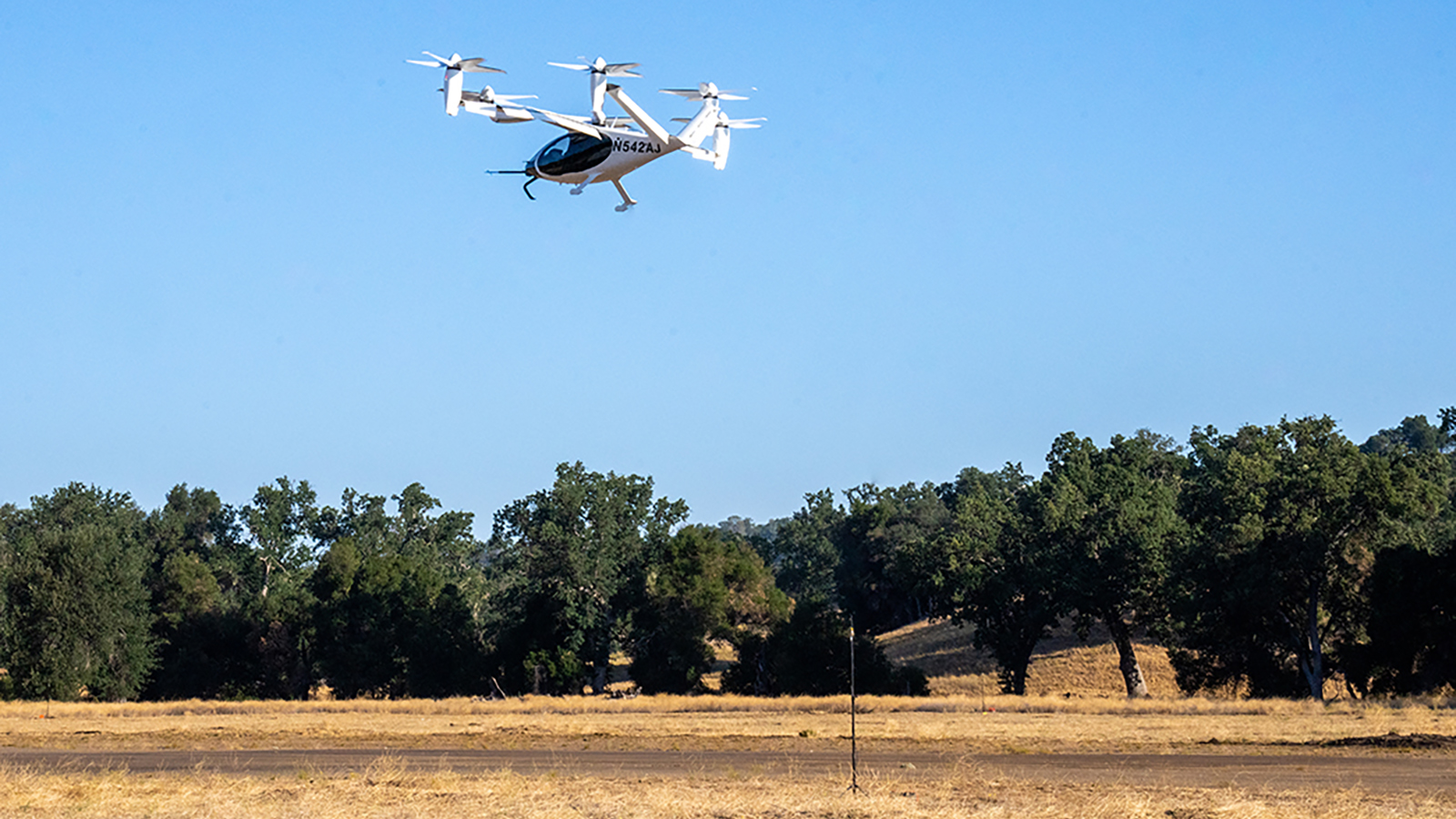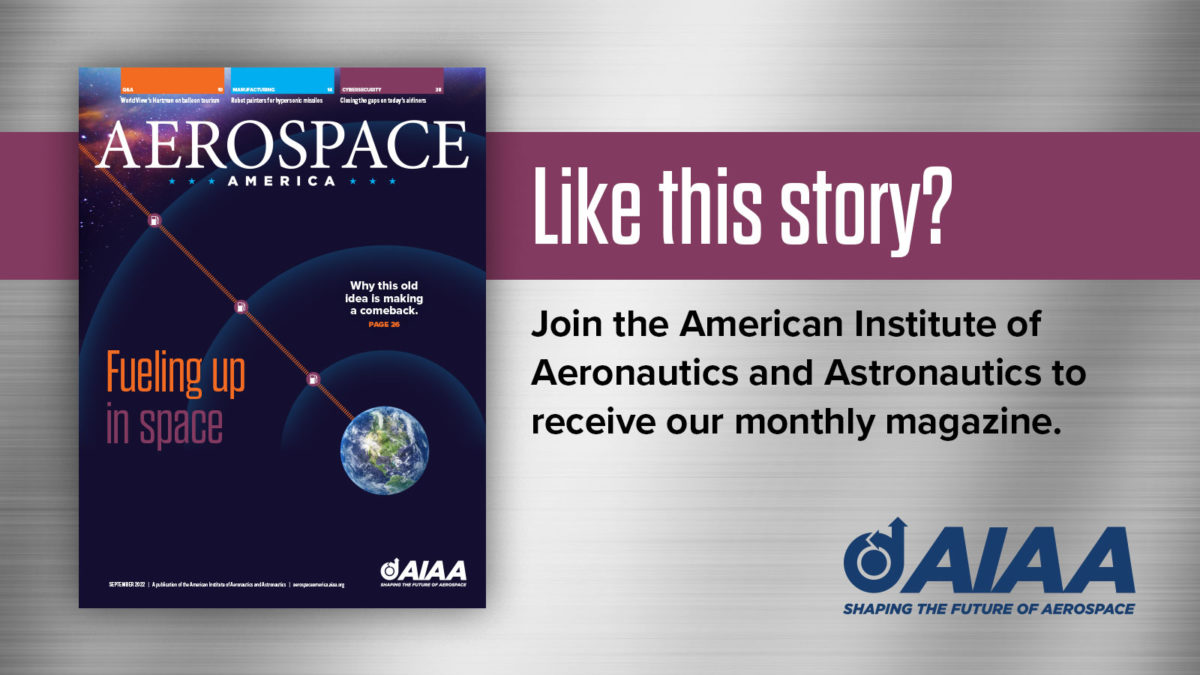Stay Up to Date
Submit your email address to receive the latest industry and Aerospace America news.
Fierce competition and grueling development schedules limit what NASA sees from advanced air mobility startups
NASA engineers and technicians are contributing to the development of noise and safety standards for advanced air mobility aircraft, but the agency is having to do this work with limited knowledge about the coming designs, given how closely companies are guarding their innovations in this fiercely competitive market.
NASA works with dozens of advanced air mobility startups through its Revolutionary Vertical Lift Technology Project and has formal agreements with California-based Joby Aviation and Wisk Aero to collect vehicle performance and acoustic data for use in modeling and simulation of future airspace concepts.
To learn more, I spoke with NASA’s Susan Gorton, manager of the Revolutionary Vertical Lift Technology project, through which the agency reaches agreements with companies to develop the necessary air mobility technologies.
“When it comes to the companies we have agreements with, like Joby and Wisk, they are sharing more with us than the companies that don’t have agreements with us,” Gorton says. “But in general, they are all working so hard and so fast and so furiously” that having external agreements, even with NASA, is a burden. “So I wouldn’t say that we’re getting everything coming out of these companies, even through our agreements.”
Still, Gorton says, the variety of innovations and new technologies in the AAM industry is broad and growing every day — spurred by advances in electric propulsion capability.
Such advances include precise control of electric rotor revolutions per minute, without the need to “spool up like a turboprop,” she says. “The electric motors give you a lot of flexibility about where to put the thrusters, and that has led to this explosion of different design concepts. That’s exciting, but it remains to be seen what falls out as being most efficient and most beneficial.”
Another factor that limits the ability to predict AAM success is the variety of missions and applications these companies plan to address, she says.
“Companies will determine their target markets and their requirements will backflow into their vehicle design choices,” Gorton says. “For some applications, noise may be the primary consideration to get operational approval. For other applications, it may be payload or range that needs to be the primary driver, and larger vehicles or hybrid propulsion systems may be the design choice.”
She offers a parallel from the automotive world by way of comparison: “A minivan doesn’t do the same mission as a four-wheel-drive truck, and I think we will see different designs for different missions in the AAM configurations.”
For example, Gorton believes electric aircraft that may operate in rural areas will need to be much quieter than those designed for urban flight where background noise is greater.
Measuring such noise generated by different types of AAM aircraft has been a major focus of NASA’s effort to define the kinds of innovations that will be needed, Gorton says. But, like other aspects of AAM technology, NASA is also working to define the differences among the many novel designs emerging from the industry.
“As we see the unique design configurations come out, we can see that they have dropped rpm, they have dropped the rotor’s tip speed, and that it is making a huge difference in reducing noise level,” Gorton says.
She says variations in rpm prompt noise frequency variations that could annoy the public. “So I think we’ll see these companies looking more and more at different ways to control the rotor and the rpm speeds.”
NASA completed a first round of noise tests with Joby in 2021. By December, the agency plans to conduct more tests with Wisk, a company based in Mountain View near San Francisco.
Gorton says the distributed electric thrust employed by AAM aircraft generates different types of noise when compared to typical prop planes or helicopters — namely, broadband noise. Such noise is constant or level, rather than the rhythmic chopping sound of a helicopter.
“Broadband noise has been a topic of study for many years but has not been a significant source of noise for vertical flight vehicles until the new electric vertical takeoff and landing [eVTOL] configurations have emerged,” Gorton says.
She says NASA’s next steps regarding noise will be to use “very high-powered computational tools to understand and predict the noise from blade-wake interactions.”
NASA’s noise work is aimed at “improving the overall prediction of vehicle noise and identifying the sources of noise on nonconventional configurations,” she says.
Ultimately, NASA understands that electric propulsion and the desire for advanced mobility has led to unprecedented variety in aircraft design, and the agency intends to develop analysis tools so AAM companies, FAA and industry organizations can evaluate noise, safety and performance for such a broad variety, Gorton says.
“You can reduce speed and then have a different type of airfoil or add more rotors or any number of things to offset that lower tip speed,” she says. “Companies have to be able to make their own choices about what’s important to them.”
So, until more companies achieve commercial operations, NASA is waiting like the rest of the world to see exactly what emerges.
“You know, I think everybody is working to find that balance among the various tradeoffs and options these electric vehicles provide,” Gorton says.
Get the latest news about advanced air mobility delivered to your inbox every two weeks.
About paul brinkmann
Paul covers advanced air mobility, space launches and more for our website and the quarterly magazine. Paul joined us in 2022 and is based near Kennedy Space Center in Florida. He previously covered aerospace for United Press International and the Orlando Sentinel.
Related Posts
Stay Up to Date
Submit your email address to receive the latest industry and Aerospace America news.





